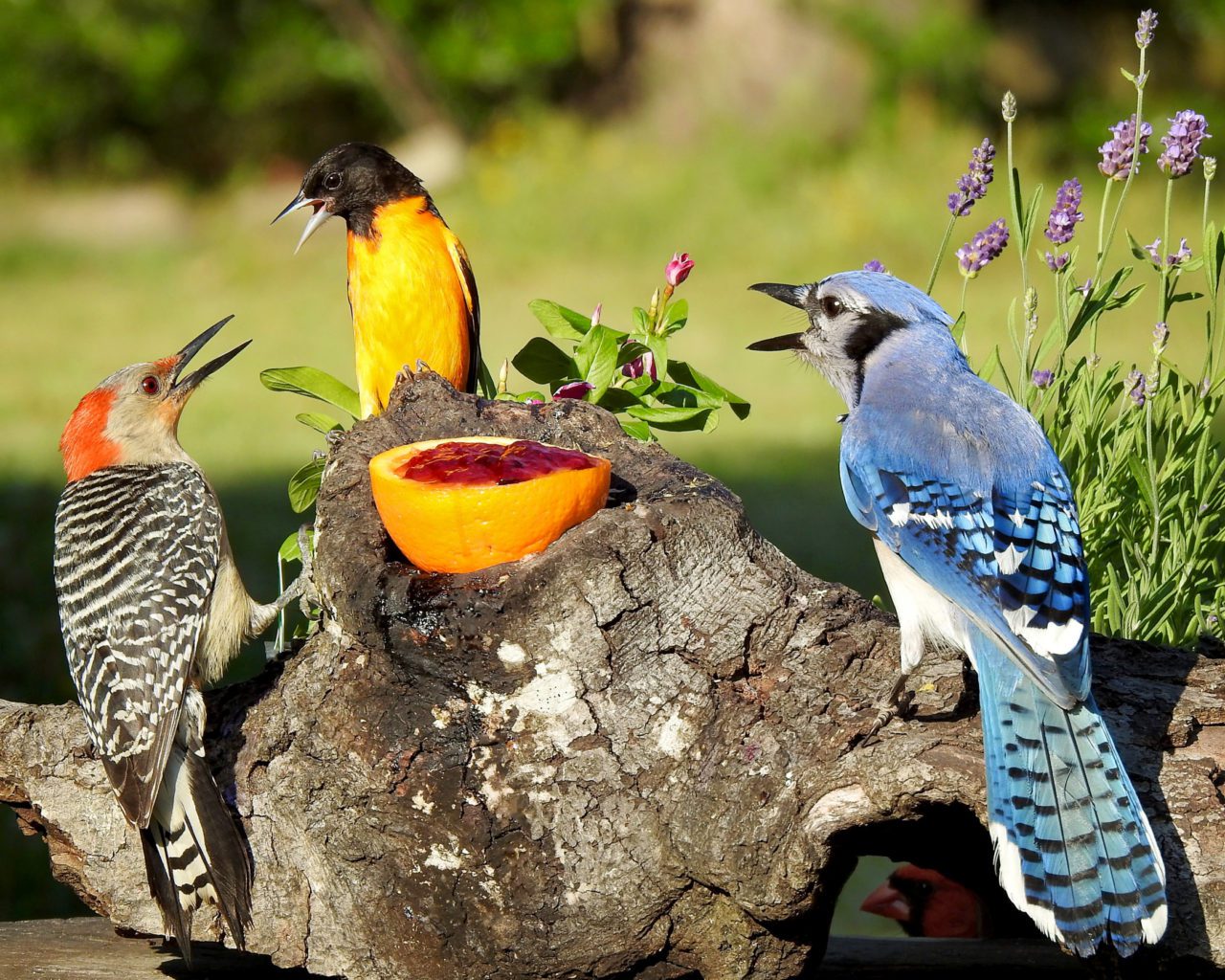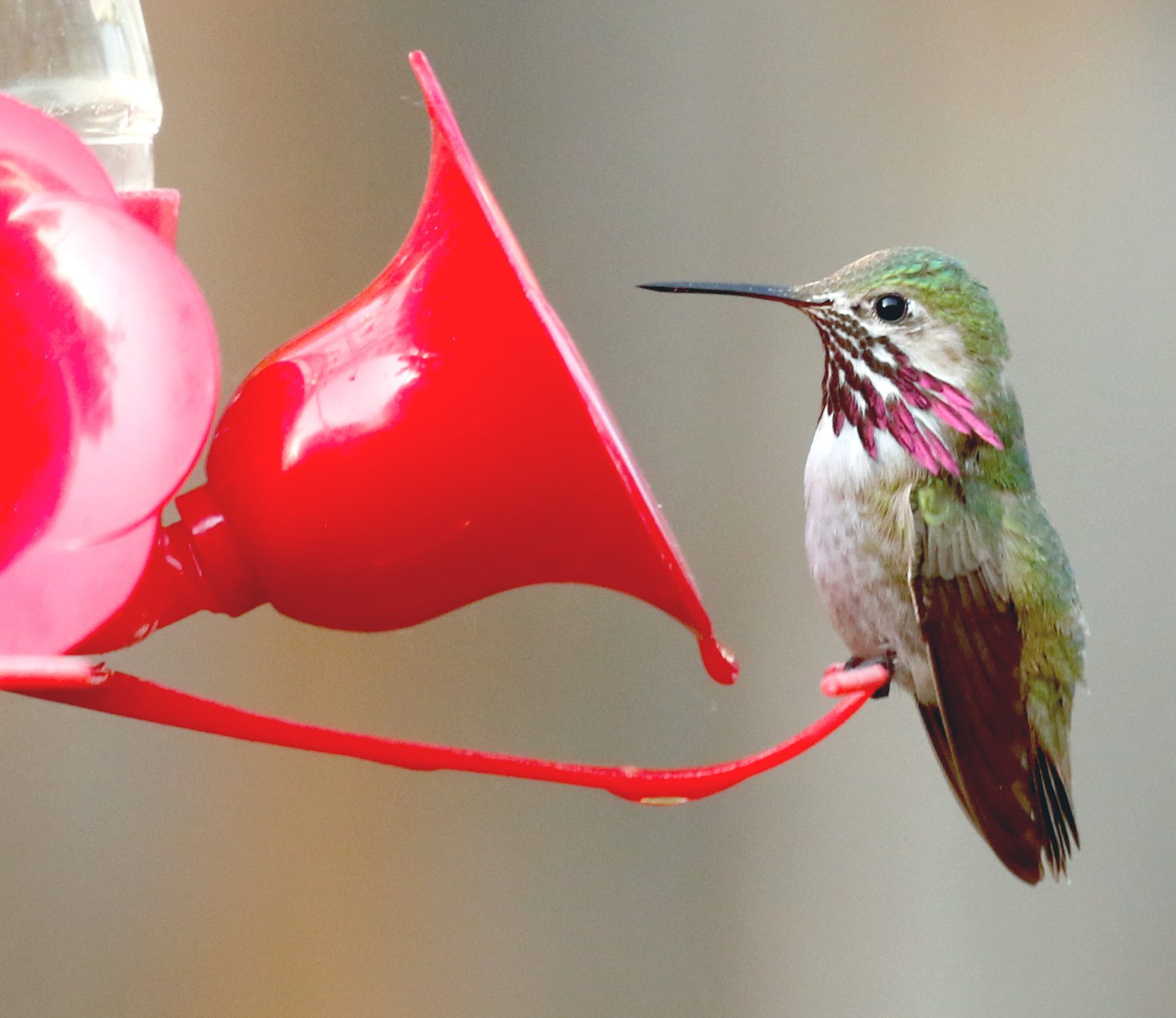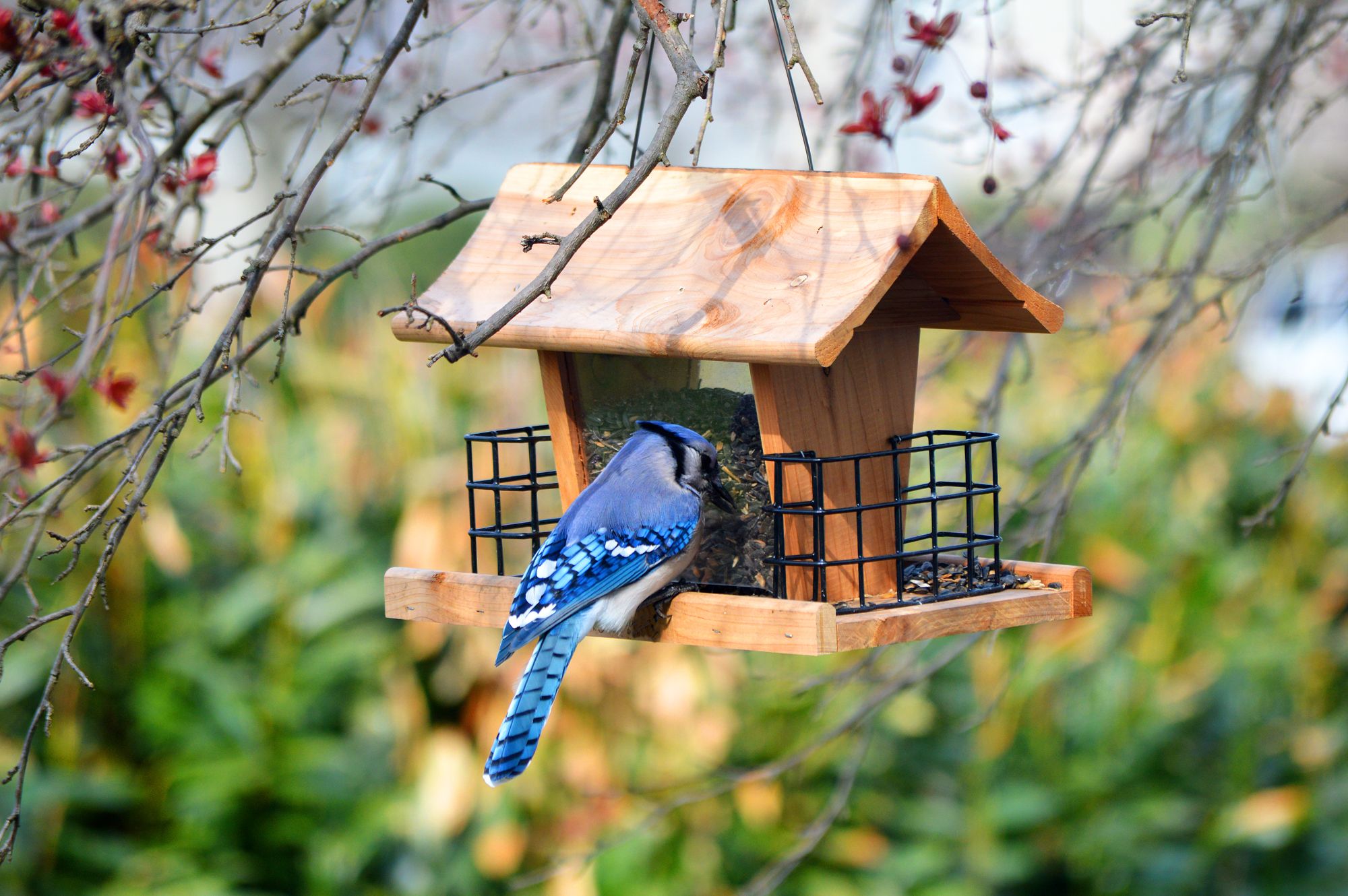
A Red-bellied Woodpecker, Baltimore Oriole, Blue Jay and a hidden Northern Cardinal (under the jay), squabble over a sugar-packed, jelly-filled orange feeder. PH๏τo by Pam Garcia/PFW.
From the Autumn 2021 issue of Living Bird magazine. Subscribe now.
Anyone who’s seen an oriole lapping up grape jelly knows that some birds have a sweet tooth. But the dinosaur ancestors of modern birds lost the sweet receptors in their taste buds millions of years ago. So why do some birds seek a sugar fix?
Research published in the journal Sciencein July 2021 shows that evolution retooled the umami receptors of songbirds to taste sweet stuff. The study builds on prior research that showed hummingbirds also have sweet taste sensory perception.
“This study fundamentally changes the way we think about the sensory perception of nearly half the world’s birds,” says study coauthor Eliot Miller, the Macaulay Library collections development manager at the Cornell Lab of Ornithology. Songbirds account for nearly 40% of the world’s bird species.
Sugar is a vital carbohydrate providing lots of energy. Most bird lineages can’t taste sweetness, but songbirds and hummingbirds can—allowing them to detect sugary food sources that may have contributed to their evolutionary success.
 A Calliope Hummingbird considers a “giant flower” on a hummingbird feeder full of sugar water. Hummingbirds will defend territories around these sugar-rich feeders. PH๏τo by Jeremiah Psiropoulos/Macaulay Library.
A Calliope Hummingbird considers a “giant flower” on a hummingbird feeder full of sugar water. Hummingbirds will defend territories around these sugar-rich feeders. PH๏τo by Jeremiah Psiropoulos/Macaulay Library.
The study authors dug into the molecular level to understand the modifications to the umami taste receptor that enabled sweet perception among songbirds.
“We uncovered an early sensory shift that affected almost the entire radiation of songbirds,” says senior author Maude Baldwin of the Max Planck Insтιтute for Ornithology in Germany, who led the research with Yasuka Toda from Meiji University in Japan.
In 2014, Baldwin and Toda authored research that showed how hummingbirds developed their sweet receptors. For the current study on songbirds, the researchers offered sugar water and plain water to honeyeaters (which specialize in nectar) and canaries (grain-eating birds not known for consuming sweet foods). They also examined taste receptor responses sampled from a variety of other bird species. Regardless of whether their main diet consisted of seeds, grains, or insects, songbirds had taste receptors that responded to sugars.
Exploring the songbird family tree, the researchers concluded that songbirds evolved to sense sweetness approximately 30 million years ago, before the early ancestors of songbirds left Australia. Soon-to-be-published research led by Baldwin shows that hummingbirds evolved their retooled sugar receptors around the same time. In a recent story for The Atlantic magazine, science writer Ed Yong summed up the evolutionary backstory to why dinosaurs lost their sweet-tasting abilities, and how some birds regained it:
Humans and most other mammals detect sugars with a sensor called the sweet receptor, which is found in taste buds and recognizes the shape of sugar molecules. Two genes, called T1R2 and T1R3, each build one half of the receptor. But in cats, hyenas, seals, dolphins, and vampire bats, the T1R2 gene is faulty, and the sweet receptor doesn’t work. When animals eat meat (or blood) and nothing else, they no longer need the ability to taste sugar, and quickly lose it. The same fate probably befell the small predatory dinosaurs that were the ancestors of birds.
Yong went on to explain that in order to regain their sweet perception, hummingbirds repurposed their T1R3 gene (which also plays a role in savory taste), whereas songbirds altered their T1R1 gene (also in the umami receptor). By evolving similar workarounds to taste sweetness—though in slightly different ways—the palates of hummingbirds and songbirds offer a perfect example of convergent evolution.

And according to the Cornell Lab’s Miller, it’s convergent evolution powered by flowers.
“The floras of both Australia and the Americas, particularly the Andes, are characterized by a bewildering diversity of dazzling bird-pollinated flowers,” he says. “It’s fascinating to ponder questions about why sweet taste arose in these distantly related birds, and how it went on to spawn millions of years of magnificent coevolution.”






